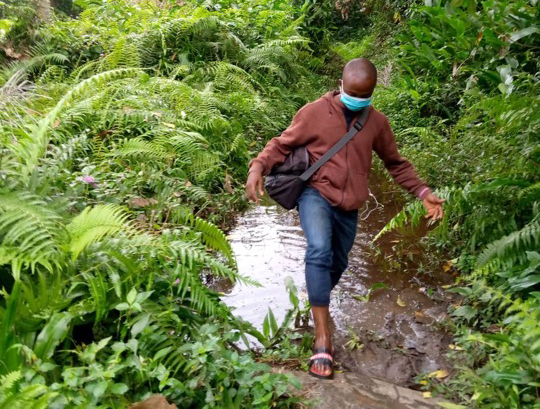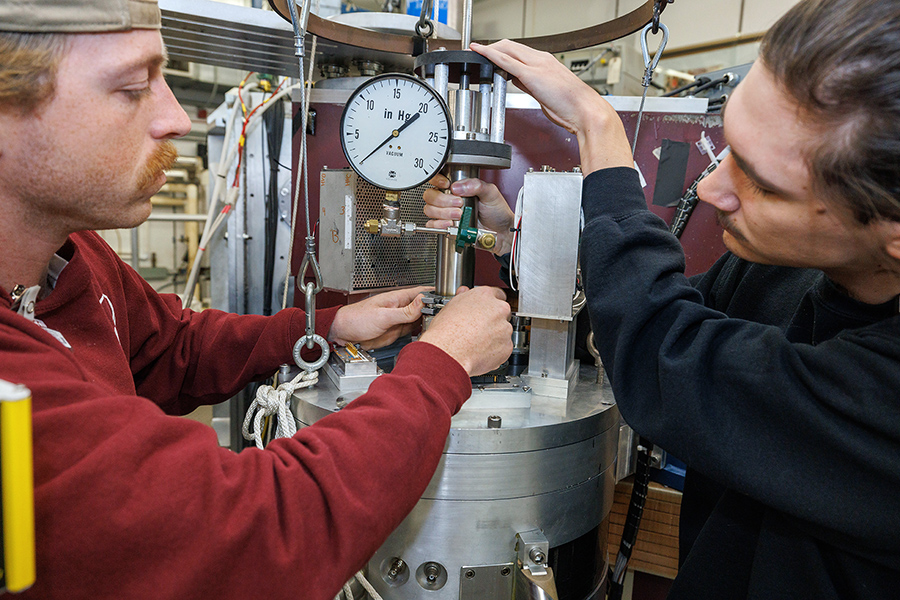The Center on Human Trafficking Research & Outreach will be housed in the School of Social Work, and David Okech, an associate professor at the school, will serve as the center’s first director. This collaborative effort aims to identify better ways to measure the prevalence of trafficking while crafting real-world solutions to best equip nongovernmental organizations and policymakers with the tools and information they need to combat trafficking.
Joining Okech in driving research and program development at the center are Nathan Hansen, a professor of health promotion and behavior at the College of Public Health, Tamora Callands, an assistant professor of health promotion and behavior at the College of Public Health, Jody Clay-Warner, professor in the department of sociology in the Franklin College of Arts and Sciences, and Lydia Aletraris, an associate research scientist in the School of Social Work. They have been part of the African Programming and Research Initiative to End Slavery, known as APRIES, which is providing the foundation for the transition into a center.
“Science is always a building block,” Okech said. “You build it up, and sometimes it’s big and sometimes it’s small, but you keep building. Through the center, we want to let the research speak for itself. If particular research or methodologies work, good, and if it doesn’t, then we need to think about what else could work because right now we don’t know what really works well in terms of estimation methods and generating reliable data that can inform anti-trafficking policies and programs.”
Faculty members across campus from law, political science, psychology, public health, social work and sociology as well as postdoctoral research associates and students all will be active in advancing the center’s mission in enhancing the science around measuring and monitoring the prevalence of human trafficking and implementing plus evaluating evidence-based programs and policies to reduce the problem.
“Human trafficking and modern slavery are large, complex problems that require solutions from multiple perspectives to address,” Hansen said. “Thus, a multidisciplinary center allows a variety of disciplines to work together on these problems. Further, locating this center at the University of Georgia allows access to the broader university community, including many talented and motivated faculty and students, who can contribute to finding solutions to these issues.”
“Having a center will enable us to take all of our collective expertise, knowledge and skills, and package it in a way where we can get this information out to those who need it,” Callands said. “This will be a center that will benefit from the connections we have, the work we’re doing and the lessons learned, enabling it to be successful. That means sharing information with others, and providing trainings, programming and other resources to advance this important work.”
It’s the culmination of a years-long effort by Okech and his team to advance efforts to not only better understand and track global human trafficking and human slavery, but also curb this epidemic of cruelty.
Estimating the prevalence of trafficking
Okech has been instrumental in guiding the success and growth of APRIES, securing close to $24 million in implementation research funding from the Program to End Modern Slavery at the U.S. Department of State Office to Monitor and Combat Trafficking in Persons since 2018. Research, policy and programming work is being done in Guinea, Sierra Leone and Senegal. In Brazil, Costa Rica, Morocco, Pakistan, Tanzania and Tunisia, the center is collaborating with U.S.-based and local researchers to test and validate the existing methods of human trafficking prevalence estimation through the Prevalence Reduction Innovation Forum program.
“As far as we know, this is the first time that researchers are applying and comparing more than one method to measure human trafficking prevalence on the same population,” Aletraris said. “The results from the Forum should be able to provide guidelines on which methods work best and why. This will be extremely helpful, not only for research on human trafficking, but for research on other hidden populations as well.”
By rolling APRIES into the center, its work will benefit from greater collaboration and an infusion of funding to help Okech’s team better monitor prevalence, while also developing effective interventions that are appropriate and customized for those who have been trafficked. The center will also expand its focus to include domestic trafficking, including trafficking here in Georgia as well as in other parts of the U.S.
Crucial to that work is eliminating that knowledge gap when it comes to prevalence. Without a practical understanding of the severity of the problem, it is difficult to craft solutions.
And while Okech said one distinct measurement of success for the center is a drop in the prevalence of human trafficking, he noted an initial increase could also be interpreted in several ways, including more public awareness leading to more reporting. This would indeed be a good thing but ultimately, efforts should lead to measurable and drastic reduction in human trafficking.
“Human trafficking is a multidimensional and complex problem,” Okech added. “It is important to address the root causes of trafficking by focusing on the drivers and facilitators of the phenomenon.”
Preparing future researchers
Also crucial to the center’s success is preparing the next generation of anti-trafficking researchers and advocates. As such, the center will offer an immersive learning experience to students across the university. Okech noted many programs and centers of study offer ample opportunity for research, but he and his team envision integrating students into nearly every facet of its operations.
“They’ll be involved in writing manuscripts for publications and grant applications. They will be involved in engaging with various stakeholders so they can grasp the problem holistically as well as the array of solutions to mitigate the problem,” he said. “They’ll be involved in meetings with local government officials so they can understand how policy is made. They’ll be involved with our programs so they can see and experience how such initiatives are run.”



